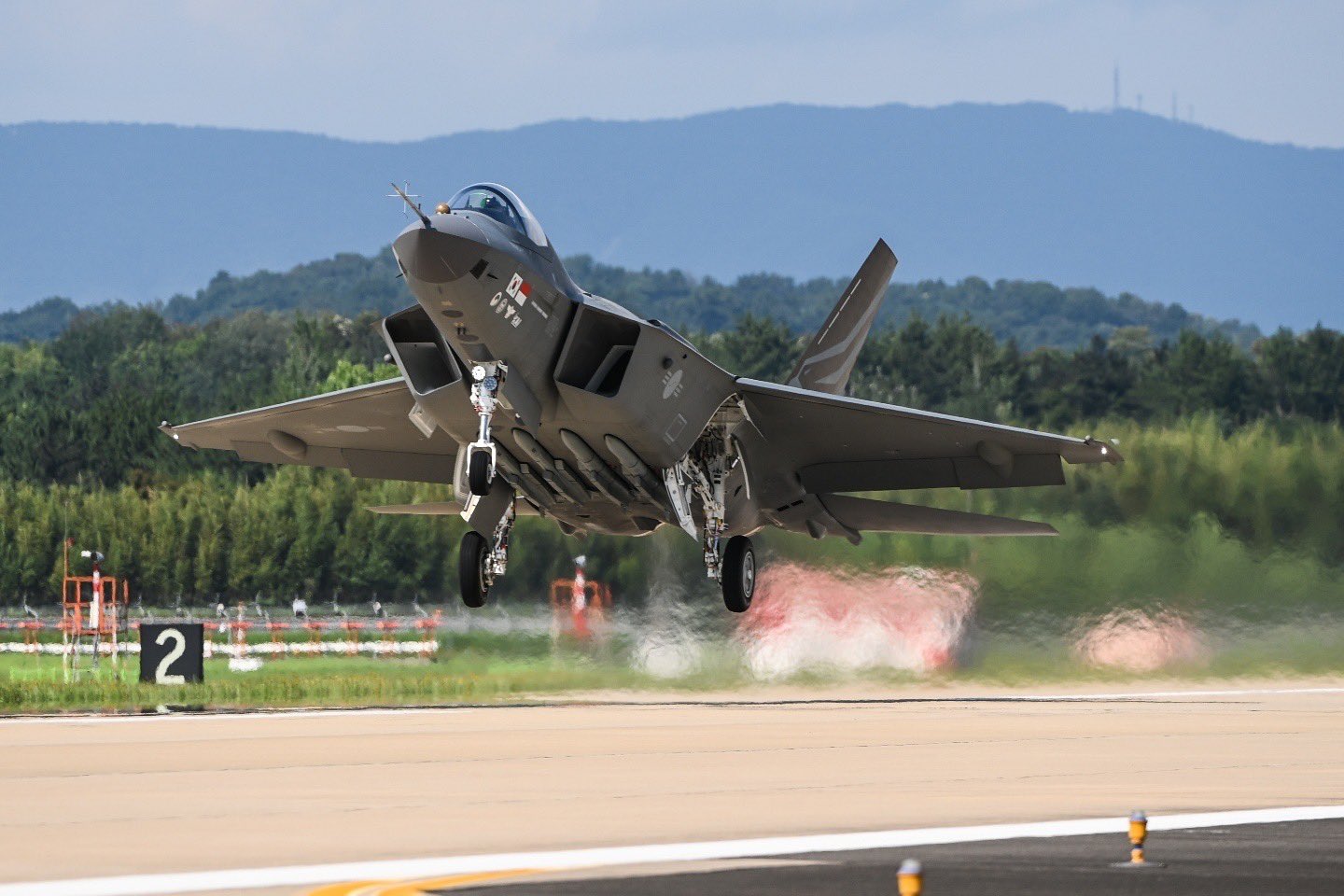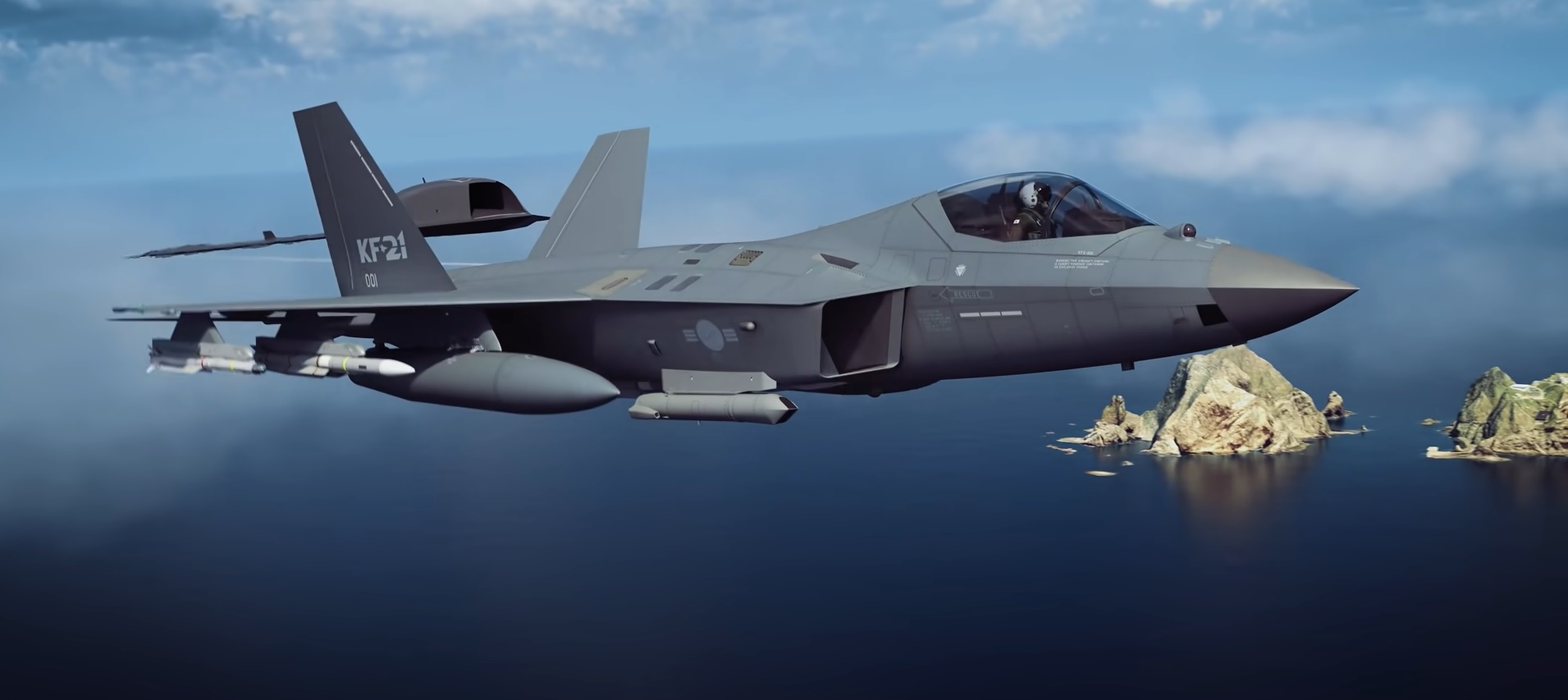On July 19, South Korea’s indigenous KF-21 fighter completed its first flight test, dispelling concerns about technical difficulties, financial viability, and other factors.
The warplane took off at the 3rd Flying Training Wing of the Air Force in Sacheon, about 300 kilometers south of Seoul.
According to the Yonhap News Agency, the successful test flight indicates South Korea is on track to join an exclusive group of seven nations with homegrown supersonic fighter jets.
The project is anticipated to cost about 8.8 trillion won ($6.67 billion). Interestingly, during its first test flight, the KF-21 prototype reportedly carried four Meteor AAM practice rounds/mock-ups in semi-recessed bays.
The latest success is significant for South Korea, striving to upgrade its air force and replace its aging F-4 and F-5 fighters with advanced aircraft to counteract North Korea’s evolving nuclear and missile threats.
#BREAKING ???? KF21 first Flight was successfully carried out
— Húrin (@intel1osint100) July 19, 2022
As previously reported by the EurAsian Times, the country has so far developed five KF-21 prototypes for testing purposes, with the sixth reportedly on the way. To complete the development of the overall fighter by 2026, the prototypes are expected to fly 2,000 or more sorties collectively.
The combat and survival abilities of the KF-21 Boramae will gradually advance through the integration of block enhancements. The aircraft in Block 2 will be more advanced and have an internal weapon bay to increase stealth.

According to reports, the Block 3 aircraft will be sufficiently sophisticated to compete with the F-35 or F-22. The nation plans to go much further, gradually incorporating sixth-generation aircraft features into its KF-21.
The future Korean fighter will have laser weapons and artificial intelligence, among other features. Additionally, the jet can engage in combat operations with unmanned vehicles like the stealthy Stingray.
Timeframe Of The Development Of KF-21
South Korea first conceived the project to develop an advanced jet in November 2000. The same year, at a ceremony, to launch the homegrown KT-1 trainer aircraft, the country’s then-President Kim Dae-jung revealed Seoul’s ambition to become an advanced fighter manufacturer by 2015.
In November 2002, the project made its first small progress. At the time, the Joint Chiefs of Staff created a long-term plan to develop a superior fighter with capabilities above and beyond the KF-16 fighter. Additionally, the nation revealed it intended to produce 120 units.
<KF-21 보라매 최초 비행 성공>
한국형전투기 KF-21, 보라매가 2022년 7월 19일
15시 40분에 이륙하여 16시 13분 안전하게 착륙하며
최초 비행에 성공하였습니다.#한국형전투기 #KF21 #보라매 #최초비행 #성공 pic.twitter.com/ZJNCwB0ZfH— 국방부 트위터 대변인 (@ROK_MND) July 19, 2022
The project, however, quickly ran into some challenges. The efforts were deemed unfeasible by the two state-run organizations, the Korea Institute for Defense Analyses and the Korea Development Institute, in their respective analyses published in 2003 and 2007, respectively.
It, however, gained much-needed traction in 2009 when another government-commissioned study by Konkuk University found that the fighter development plan was financially viable.
The government then began an initial research process from 2011 to 2012 before deciding on a comprehensive plan for the fighter project in 2013. That included the necessary operational capabilities and the target deployment period.
The country then decided to seek critical aircraft technology from the United States. However, the response to that request was reportedly negative. This compelled the South to concentrate on developing the necessary technologies independently.
The domestic defense industry then began working on four critical technologies: an active electronically scanned array (AESA) radar system, an infrared search and track (IRST) system, and an electro-optical tracking pod (EO TGP), and a radio frequency (RF) jammer.
Several political crises have also been centered on the plane, including a dispute over payments between South Korea and Indonesia. However, Indonesia finally consented to pay South Korea the required sum in November 2021 for the program.

British Tempest Demonstrator To Fly Soon
Meanwhile, the UK also appears to be on the right track to developing its next fighter jet.
On the first day (July 18) of the Farnborough Airshow, the UK announced that a low-observable demonstrator for the UK-led Tempest Future Combat Air System (FCAS) would take to the skies within the next five years.
The FCAS program is aimed to build a next-generation combat aircraft.
Ben Wallace, the UK’s defense secretary, revealed plans for the nation to take the lead in developing a demonstrator fighter aircraft that would be crucial in proving the technology and guiding principles of the Tempest Future Combat Air System (FCAS).
“The demonstrator is vital for ensuring our technology, skills, and industrial capability are ready for the future,” the Ministry said in a statement. “Designing and building the flying demonstrator will prove integration and test skills. It will also provide invaluable data and lessons to the UK industry to support the introduction of a new FCAS aircraft from 2035.”
The statement said that the government and Team Tempest industry partners have already begun developing the demonstrator aircraft. The United Kingdom is actively pursuing collaboration opportunities on the project with Italian industry partners.

According to Berthon, the MoD and Industry jointly funded the demonstrator effort. The announcement comes as Japan moves closer to formally joining the international effort and has agreed to collaborate on concept and analysis work with the United Kingdom and Italy as part of a trilateral partnership.
Britain, Japan, and Italy are working on a joint concept analysis to find common needs and consider how they might collaborate on future fighters. Decisions about the partnership’s parameters are anticipated by the end of this year (2022).
The last time the British invested in a combat jet technology demonstrator was almost 40 years ago. The Experimental Aircraft Program, an initiative that influenced the development of the Typhoon combat jet, was spearheaded by what is now BAE Systems.
UK, Germany, Italy, and Spain collaborated to develop the Typhoon, which continues to be the main focus of European combat jet research and development. Numerous jobs have been created due to the program, and capabilities are now likely to appear in the sixth-generation Tempest.
- Contact the author at ashishmichel@gmail.com
- Follow EurAsian Times on Google News




